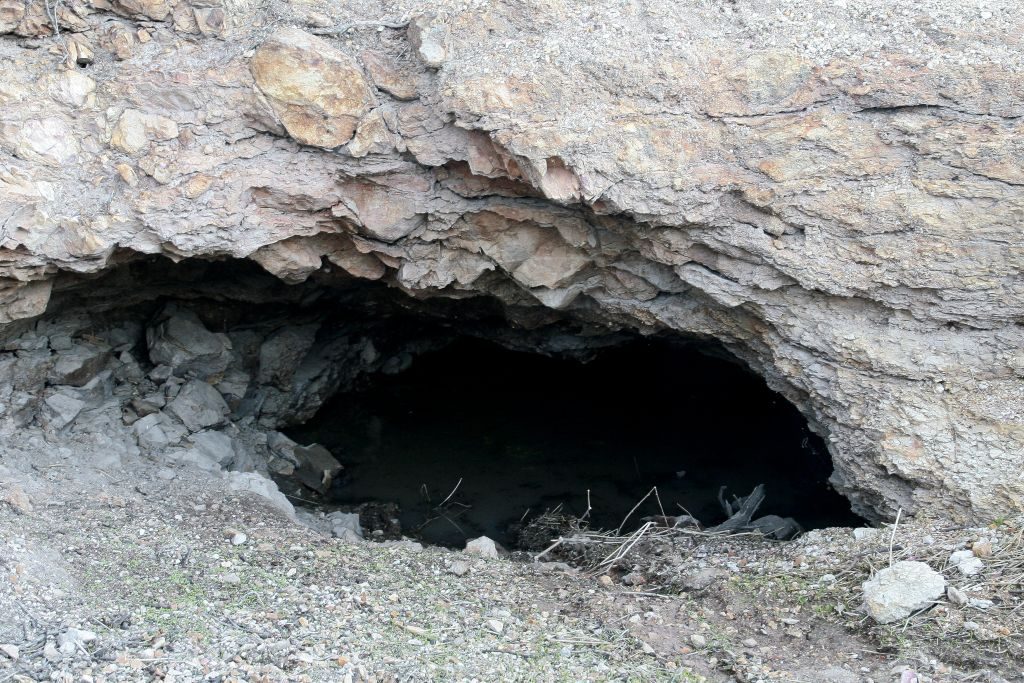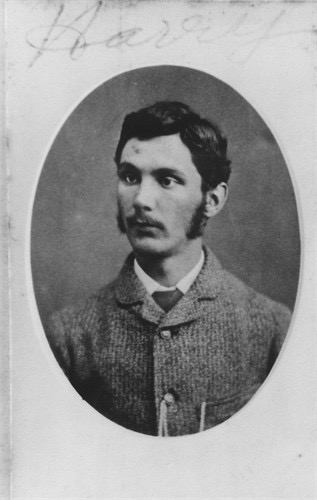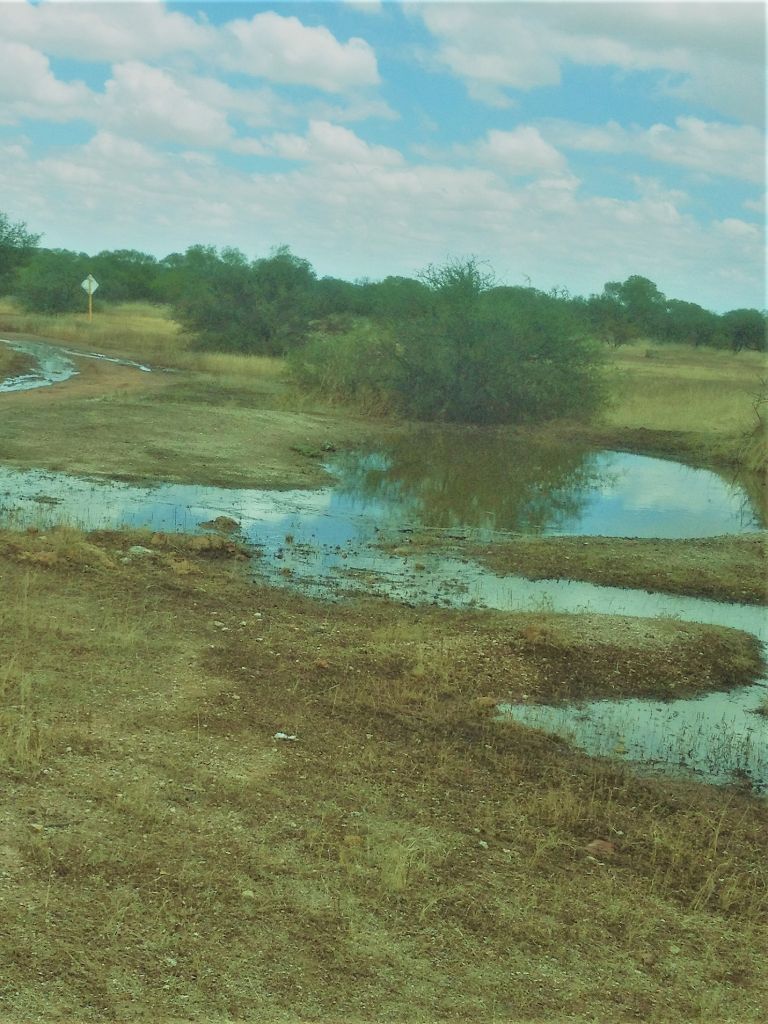Early history of Wollya Water Reserve
Researched by Lance Stevens Southern Cross Historical Society 2010
The availability of water for settlers in the newly opened district of Tenindewa was a problem from the start. It was an area known for an absence of water
Former pastoral country around Tenindewa had been surveyed into farms around 1904, with location 945 a mile south of Tenindewa railway siding set aside as a government water reserve. Tenindewa was formerly known as Wollya Estate.
Water reserve 945 contained an aboriginal soakage used by early teamsters. Complaints re water shortage led to it being deepened into a well and equipped with a windlass. A dam was also excavated nearby and fitted with hand pump, standpipe, and trough.

This is the Aboriginal well or soak that has survived possibly thousands of years It has is dry times but even in this picture there is some water to be seen at the bottom
(A.B.Facey camped at this spot on Christmas Eve 1908…….see extract from “My Fortunate Life” at end of this story)
But the soak made only a limited supply of water, and the dam depended on the vagaries of the weather. To create a reserve, two 5,000 gallon squatter’s tanks were placed at the siding for filling from mobile tanks carried on rail wagons. As it transpired they were never needed.
Meanwhile another well was sunk on the reserve which the government engineer reported contained ‘good water and plentiful.’ The well was officially termed Wollya well AA272. It was fitted with a windlass and bucket and became the main supply. The two wells were referred to as old and new well.
In 1912 on behalf of settlers, Mullewa Road Board asked the government for a grant of £250 to erect a windmill and overhead tank at new well, plus 70 chains of piping to connect with the tanks at Tenindewa siding. Tenindewa siding was seen as the hub for the district. ‘This would solve the water difficulty which is such a serious matter to settlers. Farmers will not only be able to obtain water from the well, but obtain water for themselves and horses at the siding.’
The government was unmoved. ‘In the present state of the finances it is not of the slightest use considering the matter.’
In 1914 Mullewa Road Board tried again, stating that as the two squatters tanks at the siding had never been used because Wollya well was supplying sufficient water, settlers have petitioned to sell one off and use the proceeds to erect a mill and overhead tank at the well. The remaining tank could be connected by pipe and used as storage at the siding. ‘Please grant me the authority to give effect to this petition.’
Once more the government was unmoved. ‘In view of the fact that the tanks may be required. we are unable to accede to your request.’
The Road Board tried again through their parliamentary member. ‘It is a 90 foot pull to get the water and residents are greatly inconvenienced by necessity for hauling.’ He was informed that in approved cases for equipping government wells, the local Road Board is subsidised on a £ (pound) for £ (pound) basis. The proposal to sell one of the tanks is unacceptable but we will enquire if the quality and flow of water in this well is sufficient to justify equipping it’
The local field Officer reported the water as suitable for stock but did not recommend the government covering half the expense “as erecting a mill is not justified”
In 1915 the government fenced the water reserve, providing a gate to give vehicles access to the government well inside.

Harry Stokes (hatted) and Dick Dunkin jnr About 1950
H J Stafford saw red when neighbor W H Stokes cut a hole through the fence to let his horses have access to water. WoIlya’s catchment area is being polluted by horses. Their muck runs into the dam and the water is being used by nearly all the settlers for drinking. It is no use reporting to Mullewa Road Board as Stokes is a member [of that Board]
It was pay-back when Mullewa Road Board stopped Stafford from taking water from the government wells for his sheep.
Stafford implored the government to help. ‘The Road Board prohibits me taking water from old WoIlya well for my sheep although there is ample supply in old and new wells for everyone. l will be forced to sell my stock. Please take action to stop the Board from prosecuting me and mining my character. I am a pioneer settler who has been here since 1909. Have 800 bags of wheat, 500 sheep, and 50 pigs. 1 have been taking water 8 years and the Department should stand by me. I work very hard and am succeeding where the others are failing.’
Stafford wrote again. ‘I think the government should control these wells. New well was once timbered to the bottom. Now the drives have fallen in and there is 5 feet of timber and muck at the bottom, hence no storage. All have to go on the old well causing delays.’
Enquires revealed the trouble was caused by the dam being dry and Mullewa Road Board enforcing a system of equal distribution of available water upon settlers. Restrictions on sheep at the well were necessary to conserve water for domestic purposes and working stock. `The well is in the hands of the local Road Board. Sheep kept by locals are watered to a large extent on public supplies. The reserve consists of:
- The old stock well, situated outside the fenced area and equipped last year by Mullewa Road Board with windlass and bucket.
- (B) Government well about 5 chains north of dam inside the fenced area. It is timbered to the bottom with 4 drives put in_
- (C) Dam (excavated) equipped inside the fenced area.
B and C are depended on for general purposes, but the first named is purely stock supply.
If Stafford is drawing water from the stock well, then Mullewa Road Board is acting harshly towards him.’

Henry Job Stafford (His nickname was “Narrow–Gauge”)
In April 1917 Mullewa Road Board advised that owing to absence of storms there is a consequent shortage of water in the dam. Settlers have come to the conclusion that the only reliable source of water is in the well. Settlers have to wait their turn and a great deal of time is involved in drawing water 60 or 70 feet. We are now in the process of providing a mill and a 3,000 gallon storage tank costing £45. Please adhere to the original arrangement to pay £20 towards the cost.
The local Field Officer was instructed to inspect the workmanship, and reported that the tank stand was poorly constructed with bush timber and unsafe to fill with water on its 10-feet high superstructure. ‘The windmill is 8 or 10 feet and situated on a four post 20-foot stand of black iron, which is very rusty. The mill is very rough.’
Mullewa Road Board did not let up, pressing for the sale of one of the squatters tanks at the siding so as to fund a mill. ‘Settlers would derive greater advantage from this proposal than could be derived by utilization of tanks at the siding which were placed there to bring water in by rail. As the supply of well water is ample for requirements, there is no need to bring water in by rail.’
The government seized on the admission that tanks at Tenindewa were not needed and promptly moved them to Dalwallinu where the need was greater. ‘As an adequate supply of water exists, the Department cannot see its way to consider erecting a windmill due works needed in less favored locations.’
Mullewa Road Board tried a new tack, asking for only £20 and settlers would contribute the balance. ‘The Board will erect and maintain the mill and elevated tank. Settlers here are suffering as is elsewhere. Some are carting water 12 miles. These settlers should be considered as deserving.’
This received a favorable response. An agreement was drawn up giving Mullewa Road Board permission to erect a windmill and tank on Wollya New Well, with the government contributing £20 payable on completion of the job and passed by an inspector. •Board to take control of the said works, with government requirements for water free of charge.’
A few months later in 1915. the Road Board asked could it place the mill and elevated tank on the government dam nearby instead of new well. `Good rain has filled the dam and settlers would be better served having the mill on the dam where the water is of better quality. Settlers have undertaken to provide and erect a mill on the well at their own cost at a later date if necessary.’
The government replied that it regrets being unable to subsidise erecting a mill on the dam, `and as there seems no immediate necessity for the windmill at the well, the subsidy will remain in abeyance for the present.’
Political pressure was again brought to bear with MLA Cunningham stating it would only be fair to adhere to the original promise to pay £20 even though it is being used on the dam instead of the well.’
Internal procrastination within the Water Dept went on. ‘The new well is in the centre of the catchment area and to put a storage tank at the well would result in refuse accumulating in the drains and be washed into the darn. The well will probably not be used for several years now the drought has broken. It would be bad business to put a mill on the well now that we have a supply of good water in the dam. The dam holds 360,000 galions and in all probability will hold water for years to come. We would prefer to erect an elevated storage tank near the present trough (on the darn) using existing standpipe. A mill could be erected for say £40. Should the occasion arise we will erect a mill on the well and lay piping to the storage tank. If the dam runs dry we could use the well. Tenindewa siding is the loading centre for these farms, and we wish to run water to the siding at a later date from the darn. A mill and storage tank will be necessary as well water is useless for horses not accustomed to it. It is useless for domestic purposes and not good water and the supply is limited. As several farmers of the east side are prepared to donate piping from the dam to the siding, a mill and storage tank would be the first step towards a desirable undertaking.’
The government was reluctant to pay the £20 as it considered the original deal had expired and the present equipment was not up to standard. Finally in March 1920 it paid up when the equipment was modified.
Meanwhile Tenindewa continued to grow with more settlers as well as a railway gang stationed at the siding; all needing water from Wollya along with their animals. There was also a store and post office. A school opened in 1913 but closed in 1924.
In 1924 Mullewa Road Board asked tor a grant to put the well back in order. Inspection showed the windmill had been damaged in a storm and would cost more to repair than it was worth. Additionally it was not strong enough to lift water 80 feet. Also the well required attention. As Wollya wells were the only source of permanent water near Tenindewa, the government subsidised the Board to upgrade the mill head and erect troughing and repair the windlass. The job was done by local farmer T Butler.
In 1927 the dam was cleaned out at a cost of £30
In 1944 Wollya was again under notice when W H Stokes who owned the surrounding land used the reserve to run stock on. Mullewa Road Board complained to the government. ‘Please advise what action we can take against the person offending.’
It transpired that Stokes. a former Board Member, had fallen out with colleagues over the Mullewa cemetery site and there was now bad blood.
Internal correspondence stated that Reserve 945 of five hundred acres was set apart for water and vested in the Minister for Works. Two small reserves 1616 and 16654 inside reserve 945 were vested in the Minister for Water Supply Sewerage and Drainage during 1917.
In 1952 Stokes offered to purchase Reserve 945 for 10 shillings per acre plus £200 for the darn. have farming land on either side and lose crop through vermin that finds cover and water in the reserve. There is an old unused tank thereon put down by the government about 40 years ago and has long since outlived its usefulness. It has not been cleaned out for years and never used by settlers, providing water for vermin.’
The Field Officer reported back that the dam is in reasonable condition but water only fit for stock. Fence is in bad shape and stock and vermin have access to water. During summer the dam becomes a swimming pool for the district, a practice for a number of years. The catchment is hard ground providing good runoff but polluted by animal droppings, and is infested with rabbits. Sheep also graze. Owing to most farmers having their own bores the dam has fallen into disuse except for swimmers. During the war the army used the water. An old hand-operated pump is still there but unused for years. Mr. Stokes says it is 15 years since last used extensively. Stokes is running his sheep on the reserve and is the only person making use of this dam. As this state of affairs will probably continue indefinitely there appears no need for the dam to be retained for Departmental purposes.
However Mullewa Road Board saw it differently, stating this reserve should not be sold off and is still of service to ratepayers.
Stokes replied that he only wanted 80 acres of the reserve so as to secure the dam, to give water to his grazing land adjoining, “now I am forced to use the water as a trespasser. I could make use of the dam and equip the old well on this portion of the reserve. The old Wollya well has an unlimited supply at 36 feet and would remain a public asset. I will repair the top well from which Mullewa Road Board removed the windmill years ago as it had ceased to be of use.
His application was refused on recommendation of Mullewa Road Board.
Stokes again put his case to the government. ‘If Mullewa Road Board is not prepared to sell that portion which includes Wollya dam, I will amend my application to only 40 acres in north-eastern corner of reserve 945, which gives me access to the old salt well which is suitable for sheep. I offer £50 for the well plus £1 per acre for this portion. This old native well makes only 20 gallons per day, while the bottom is too salty for reticulation, and only drinkable when freshly drawn
Mr Stokes died in October 1953, before a decision was handed down.
In April 1954 a Public Works Engineer gave an updated report on the reserve. ‘There are two wells and a small dam. One well is dry and nearing a state of collapse. The other is not much better structurally, but being used by Mr Stokes junior per permission of Mullewa Road Board. He has erected a mill and tank. The darn has been equipped with a hand-operated pump and trough. I recommend the reserve be alienated. It is no longer necessary and harbouring vermin. Stokes wants 400 acres on the north side so he can sink a well. Neighbours want to fence the reserve as a community effort so as to keep the vermin under control.’
It was not until 1956 that the government passed a decision not to sell.
It transpired that Stokes was acting on behalf of his sister, Mrs. Franklin. In 1958 Mrs. Franklin was given lease of the dam but not the land for £5 per annum. She intended to erect a mill, tank, and toughing.
Water reserve 945 is still retained by the government for its original purpose. As for those pioneer wells, they are still there and could be restored to pristine condition if the need ever arose.
Authorities
State Library files 1066/18 and 214/44 `Eastward Ho’ by Bert Keefe
Victoria Express Tenindewa Wolya
8-8-1881 Advert — to Wellsinkers £100 reward by Murchison Road Board 800 gallons-24 hours to be sunk in vicinity of Cockatea Gully or at the Gums Thicket 8 miles west of Cockatea Gully. Further particulars Edward H Wittenoom, Bowes or John Sydney Davis Tibraden.
11-2-1888- Tenders for sinkling of well at Walza (Wolya) Geraldton Road Board.
Town Talk- It is reported that water borer supplied by the Government for temporary use by Geraldton Board has struck good water at an easy depth at Oilya (Wolya)
5-1-1894 (Letter) Complaint against Geraldton Road Board re Walyah Well (Wolya)
12-11-1894- Government took over Mullewa Geraldton Line
Wolya Well mentioned regularly in Road Board Minutes after formation 1911. In fact war was declared a few times
7-9-1912 letter W Brenkley re cleaning soak of Reserve 6062. Also H Johnson on the same subject.
26-11-1914 Pump to be erected at Dead Bullock Well (Must be Reserve 6062) It Is!!!
At this stage we don’t know when 6062 was declared as a reserve.
Extract from “My Fortunate Life” page 164 in chapter “On the Road to Mullewa”
We were up and away again about three o’clock and travelled along slowly. I walked for a few miles, I was tiered of sitting for so long. We arrived at the watering place that evening. Bill said, pointing to an area of green grass, “This is what we call a spring formation of the ground. Water is forced up out of the earth and runs all year around. It is beautiful fresh water. The early settlers and travelers dug a large hole at this spot and stoned it up. The hole was about eight feet wide (2.5 meters) and 6 feet (2 meters) deep and raised about 2 feet (60 cm) above the earth.
The water had filled the round hole and was running over the top and down into a creek.
Bill said, “This is a wild animals’ watering place. You will hear some frightening noises tonight. Wild horses, dingoes will all be here after the water”. We made camp about 200 yards (200 meters) from the water hole. Bill said there was nothing to worry about!
When we unharnessed, watered and fed the horses, Bill said “We are only about 18 miles (30 klm) from Mullewa. We will make it easily tomorrow.”

Related Articles
Tenindewa Notes (From our own Correspondent)
January 4th 1913
Another year just started Mr. Editor, and I believe in the number 13. I predict a bumper season for 1913. I am not going on sun spots or those kind of things but just on a guess which is nearly as comforting.
Harvest is nearly over in the district, except in a few cases where delay has been caused by machinery breakages, and this being a very bad season for stripping, too moist and not enough drying wind. Averages are small for wheat yields. I think about 9 or 10 bushels [.6 to .7 of a tonne per hectare] will be the average. All over great preparations are being made for a big cropping this year, and fallow and large areas are the order of the day. Who will be the first farmer to have 1000 acres in for one season. I think a prize should be offered by the Agricultural Association. Quantity of wheat is what most farmers are after. Quality of putting it in is all right, but does it pay to spend time on it? I think not in this area. A dry farmer here who wrote and spoke on this subject not long since, put the whole of his past seasons crop in with a spring tooth cultivator, and as far as I can see, he fared as well as any. Our district is a light soil even in the York Gum country.
Complaints still come from farmers of short weights and shortage in bags from buyers. Why don’t the farmers insist on the buyers taking delivery at the sidings. They have the matter in their own hands. I recollect a case of thirty-three bags of wheat being sent to Geraldton and the farmer lost six and a half bushels in weight, and when he complained they said, “oh that was the railways weights”. I’ll bet if it was six and a half bushels over what it should have been, they [the merchant] would not have taken the weights.
When is the government going to help farmers by exporting their wheat, making manure, and importing bags. At present it is the opinion of some farmers, that it is no good growing wheat or hay under the present conditions, as they have to content against dear manure, with uncertain delivery, dear bags, and slow delivery, and a small price for wheat, and loses in numbers of bags and weight.
The State school is almost an accomplished fact now here, and operations will commence this month. I understand Miss. Eva Stafford’ late of teacher at Geraldton High School, has been offered the position of teacher. She was a prominent pupil of Mr. Grogan’s who was head master of the State School Geraldton, and she then went through a course at the Methodist Ladies College, Claremont. The school is badly wanted and a good deal of thanks for obtaining same are due to Mr. N Fry.
Christmas passed off quietly, with a good many grafting, taking off crops.
The 300 yards Government dam near Messrs. Valentine and Dunkin’s place, is nearly completed, the contractor being Mr. J. Saunders, and he is making a good job of it.
I wonder who is responsible for Wollya Reserve. Horses and other stock are running regularly on it, and a man and his family and a team of horses, have been camped there for months. The Mullewa Roads Board should wake up and see this.
Old Wollya well wants putting in order as the dry spell is here and farmers still want stock water. Stacks of wheat are allowed to lie too long in the siding here before the Railway Department shifts them. This poor tired department keeps up a long Christmas, and no lengthened siding has yet been provided although it has been promised.
Comments
Hi there, wondering if it is Wollya or Woolya Reserve please, you have a couple of spellings on here.
Thanks Peter,
Both are acceptable but probably Wollya is the most correct
interestingly the signposts and Mullewa loop trail brochure spells it Wolya